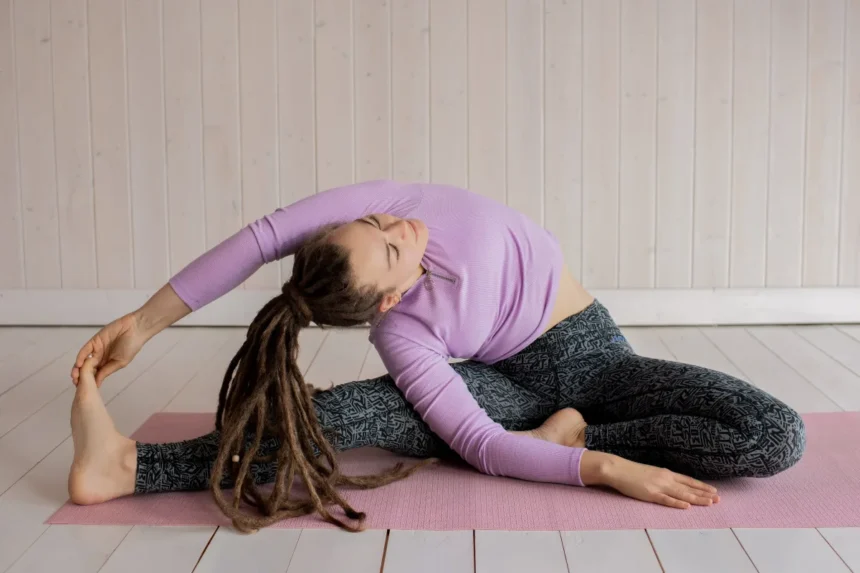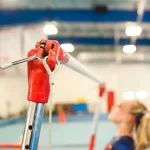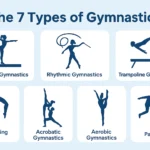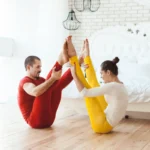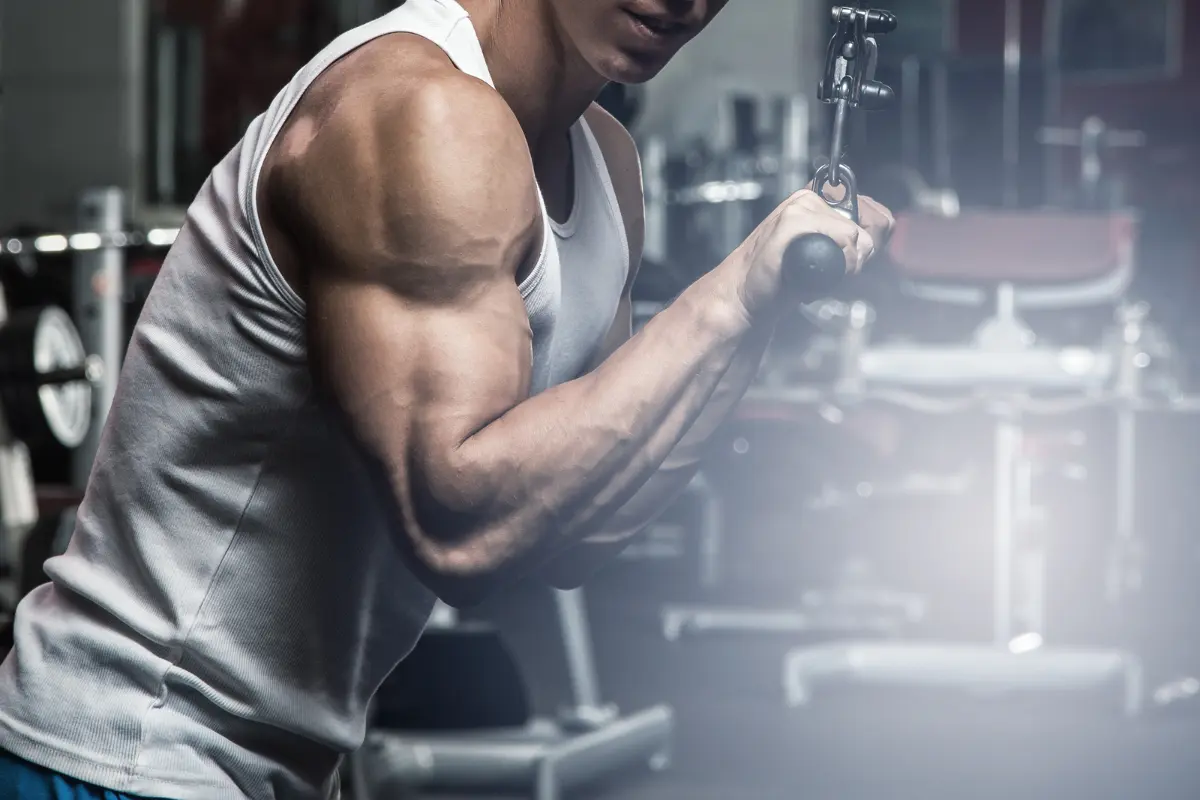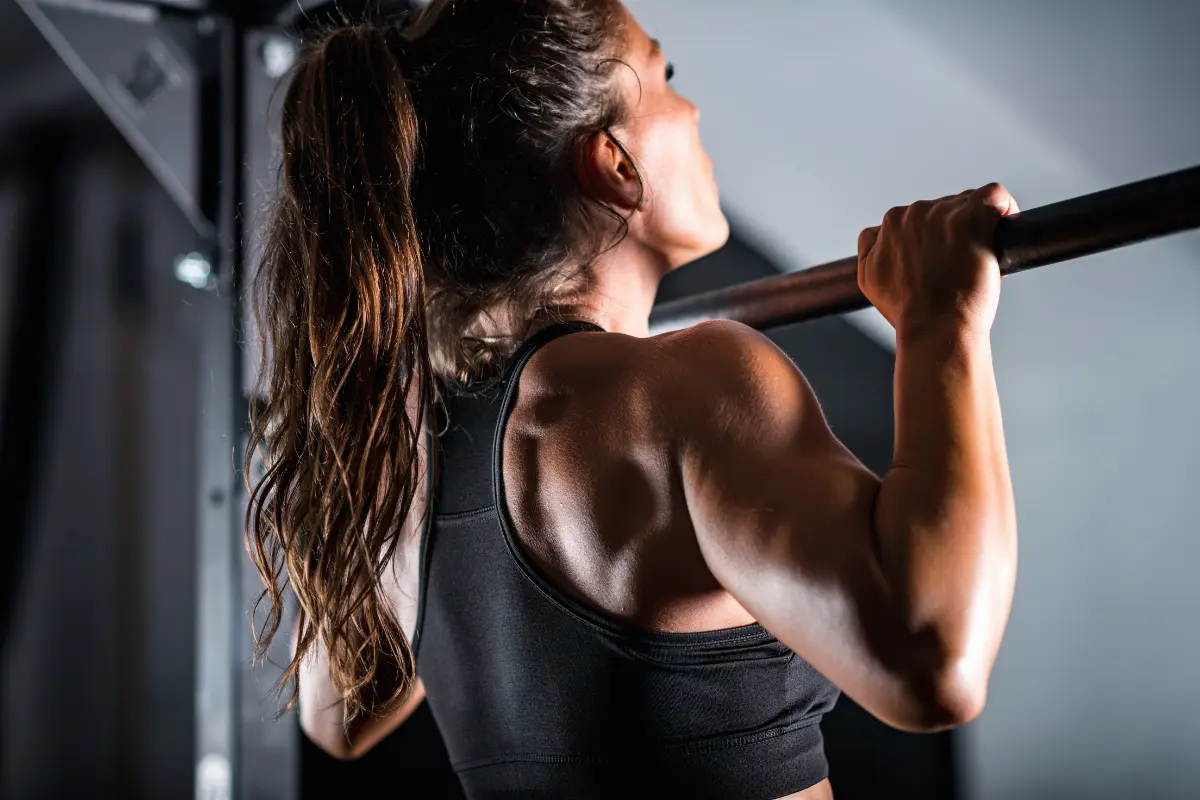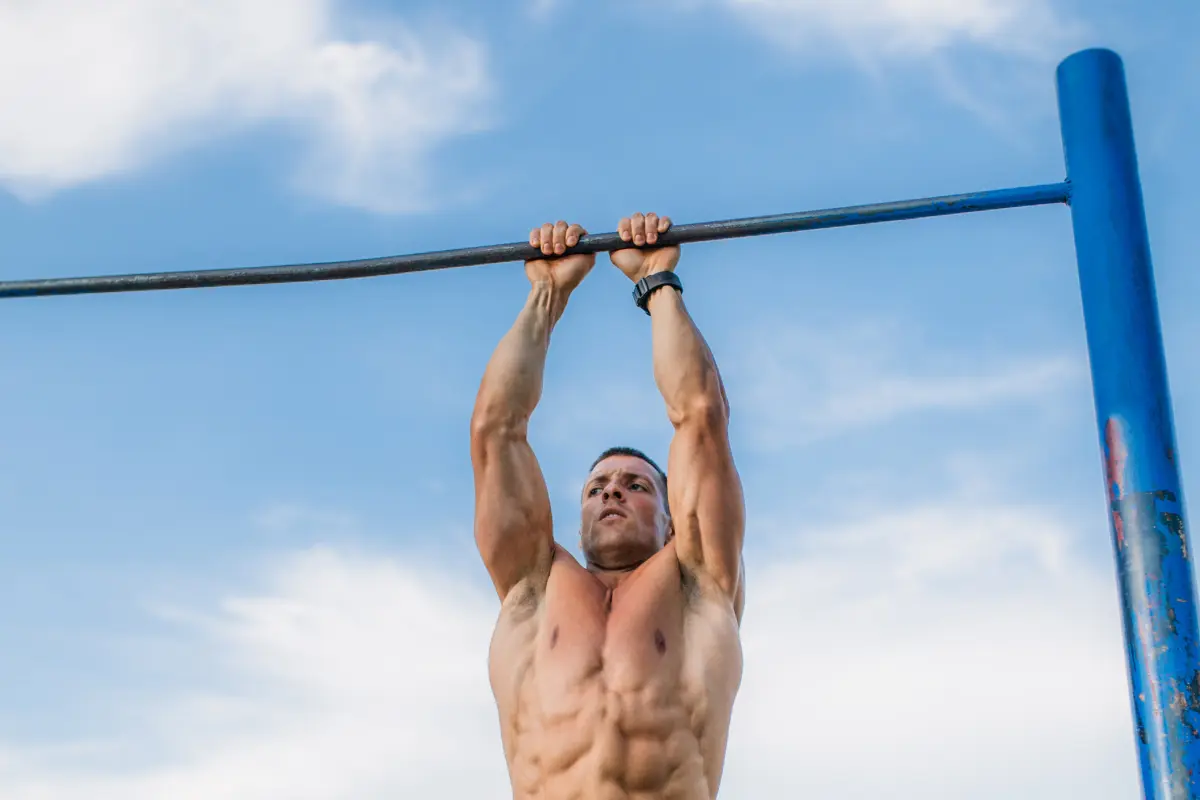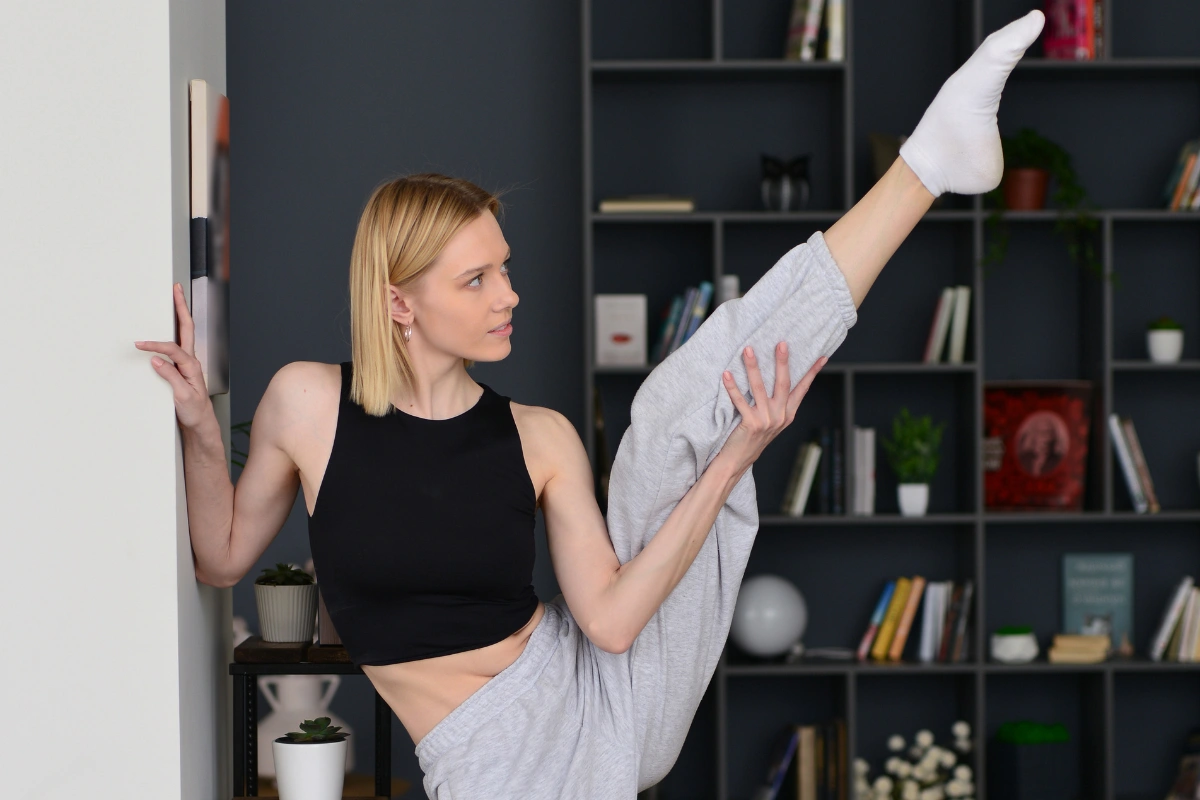If you’ve ever watched rhythmic gymnastics—ribbons flying, legs lifting into unreal extensions, backs arching like they’re made of warm taffy—you’ve probably thought, How is that even possible? These athletes seem to exist in an entirely different league of human movement.
Their flexibility is more than just a party trick—it’s a foundational skill in the sport. It’s built, stretched, conditioned, and maintained through an intense, highly structured regimen that blends science, discipline, and sometimes, sheer grit.
It All Starts with Structure (and a Lot of Stretching)
Most rhythmic gymnasts begin training at a very young age, usually around 4 to 6 years old. Young children are naturally more mobile, and their soft tissues adapt more easily to the demands of flexibility training. At that stage, they’re often introduced to basic splits, bridges, and spinal mobility work—not with the goal of perfect form yet, but to begin cultivating body awareness and comfort in extreme ranges of motion.
But even for older beginners or recreational gymnasts, structure is everything.
A typical flexibility session follows a consistent pattern that rarely deviates: warm-up → dynamic stretching → technique drills → static and active flexibility → cooldown. No skipping steps. Why? Because each component builds on the last.
Warming Up: The Non-Negotiable First Step
Before any real stretching begins, gymnasts get their blood pumping. This might mean light jogging, jumping rope, or even dancing—anything to raise the body temperature and prepare muscles for deeper movement. It might look casual, but it’s essential. Stretching cold muscles is a fast track to injury.
Once warm, athletes dive into a combination of static and active flexibility work. Static stretching includes long holds—splits, backbends, and shoulder stretches held for 30 to 60 seconds. It’s not about forcing the stretch, but about letting the muscles lengthen and settle over time.
The Secret Weapon: Active Flexibility
This is the secret sauce that makes rhythmic gymnasts look not just flexible, but powerful and in control while they’re stretching into jaw-dropping positions.
What Exactly Is Active Flexibility?
Active flexibility is the ability to move into—and hold—a stretched position using only the strength of muscles. That means no pulling with your hands, no leaning into a stretch, no relying on gravity or momentum.
It’s what allows a rhythmic gymnast to raise her leg into a perfect 180° split and keep it there without holding onto anything. It’s what keeps her spine stable in a deep backbend while twirling a hoop or ribbon. And it’s the reason their movements look so light and effortless—they’re not just getting into positions, they’re owning them.
How They Train It
Training active flexibility is more about controlled, repetitive movement patterns that build strength through flexibility. Here are some common exercises rhythmic gymnasts use:
- Leg Lifts (in front, to the side, or behind): Performed slowly and often with ankle weights or resistance bands to increase challenge.
- Backbends with Control: Not just flopping into a bridge, but rising into one from the floor or lifting one leg while in the pose.
- Splits with Arm Reaches: Holding a split position while lifting the torso upright and reaching forward without bracing.
- Wall Holds: Lifting a leg to the wall in a split or arabesque and then gently pulling away from the wall to hold it unassisted.
- Isometric Holds: Holding positions (like a standing leg hold) for 10–30 seconds to build endurance in the muscles that support the range.
These movements build muscle memory, meaning the body learns how to activate and support those command positions—not just when passively pushed.
Strength Is Flexibility’s Best Friend
There’s a huge misconception that rhythmic gymnasts are “just” flexible. In reality, they’re incredibly strong—especially through their core, glutes, and hips.
Why? When you push your joints to extreme ranges of motion, those joints need support. Without strength, flexibility becomes a liability, not an asset.
Many gymnasts incorporate Pilates-style training, glute bridges, core drills, and shoulder stabilization work into their routines. Some even cross-train with ballet or contemporary dance to maintain body control and joint integrity.
This is something recreational stretchers often miss—focusing too much on how far they can go and not enough on how well they can control it.
Advanced Tools and Techniques (Hello, Oversplits)
Once a gymnast has hit their basic goals—like full splits or a bridge—it doesn’t stop there. They start exploring beyond the usual human limits.
One of the most iconic examples of this is the oversplit.
What Is an Oversplit—and Why Do It?
An oversplit is just what it sounds like: a split that goes past 180 degrees. Imagine a gymnast placing their front leg on a yoga block, an elevated mat, or even a stack of mats, while the back leg stays on the floor. The hips sink even lower, pulling the legs into a deeper stretch than most bodies ever encounter.
To the untrained eye, it might seem excessive—even risky. And yes, oversplits are controversial. But in rhythmic gymnastics, where flexibility is a scoring factor and athletes are required to hit dramatic leg lines during leaps, kicks, and balances, training for oversplits is part of developing that extra edge in presentation.
They also use tools like:
- Yoga blocks: to deepen stretches gradually and safely.
- Resistance bands: for strengthening muscles through the entire range of motion.
- Partner-assisted stretching: carefully supervised, of course.
Oversplits are never the starting point. Gymnasts typically only work on them after they’ve mastered regular splits on both legs and developed sufficient strength in the hips and hamstrings. Attempting an oversplit too early, or without the right preparation, can easily lead to muscle strains, hip impingement, or even long-term joint damage.
Recovery Is Training, Too
Another secret to gymnasts’ flexibility? Rest. No one can stretch hard every day without consequences. Most elite gymnasts rotate focus areas—legs one day, back another—and always follow up intense sessions with mobility and recovery work.
Cool-downs, foam rolling, and even massage therapy play a role in keeping their muscles healthy and resilient. Without proper recovery, the risk of injury skyrockets—and flexibility gains often stall.
Can a Non-Gymnast Train Like This?
You don’t need to be a child prodigy or spend six hours a day in the gym to benefit from this kind of structure. The core principle is simple: treat flexibility like a skill, not a side project.
A smart flexibility training plan might include:
- Dynamic warm-ups
- Static holds for 30–60 seconds
- Active leg lifts and controlled bridges
- Strength training 2–3 times per week
- Planned rest and recovery days
YouTube channels such as Anna McNulty’s or Modern Day Dancer offer routines that mirror what gymnasts do—scaled to different ability levels.
The biggest factor? Consistency. Most gymnasts stretch multiple times per week for years. That same mindset—slow, steady, regular practice—will carry most people a long way. With a little structure and a lot of patience, even the stiffest beginner can make remarkable progress.
